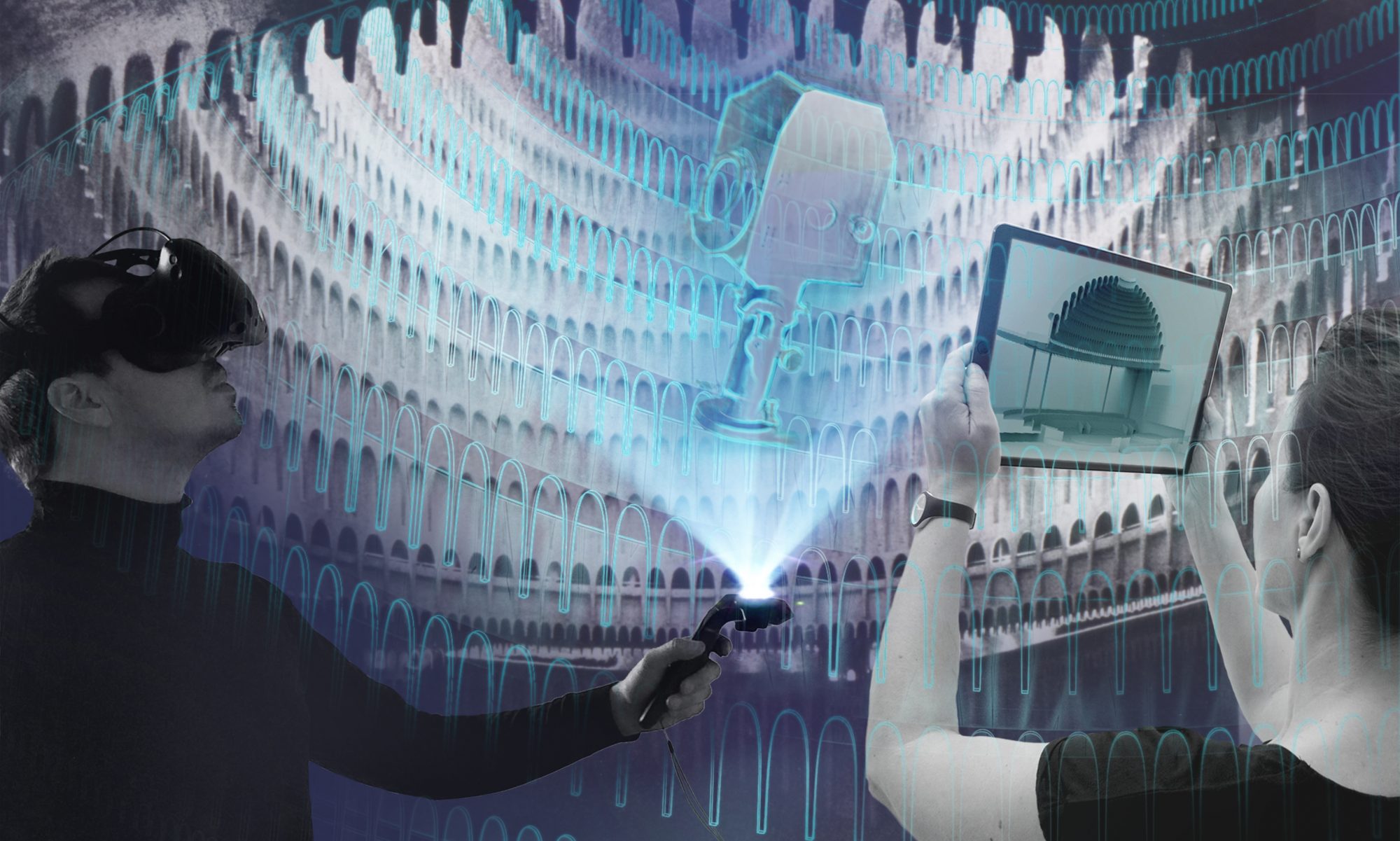In our project “Hybrid-real stages” we investigate with the VR experience “Spatial Encounters” to what extent the linking of a real/physical with a digital/immaterial space can be used as a design tool and enable completely new experiential spaces.The aim is to explore co-creation processes between audience and musicians in the context of artistic productions.
What characterizes a hybrid-real stage space? A hybrid-real stage space is primarily created by linking a “physical” with a “digital” three-dimensional space. Performers as well as viewers have the chance to observe and, if necessary, to act. The role can shift from observation to influencing and the corresponding actions have different effects on the spatial situation. It is crucial that the interaction takes place in real time and that the changes in the spaces take place simultaneously.
Several aspects are important for the exploration of such staging possibilities:
- The necessary existence of both spaces (analog/digital) for the staging to take place.
- The entanglement between analog and digital space
- An understanding of both forms of space and reality and the respective rules, possibilities and limitations to which they are subject. (The design, planning and realization of a virtual staging is just as complex as that of a staging in the physical stage space).
- The simultaneity of performance and experience
- The activation of audiences with a shift of roles from observers to actors

Not all participants have to take on all roles: In the production “Die Biene im Kopf” (Martin Grünheit and the Cyberräuber, premiere 2018, Theater an der Parkaue) an actor wearing VR glasses draws a virtual landscape. On the one hand, the audience experiences this act of digital-spatial drawing as a performance on stage, and on the other hand, the drawing becomes part of the stage space as a projection. The viewing by the audience always remains “analog”.
The play “Verrat der Bilder” (Nico and the Navigators, premiere 2019, Meisterhäuser Bauhaus Dessau) takes a different approach. Here, the viewing perspective is mirrored: the actors act in a completely analog stage space. The audience, however, equipped with augmented reality glasses, is presented with an augmented stage set enriched by digital elements.
What is crucial in hybrid-real stage spaces is that changes that take place in one reality have an effect in the other reality.
With the interweaving of realities, an interweaving of performers and actors can also take place, so that classical hierarchies of “sender-receiver constellations” can be broken down. Furthermore, this research shows the potential of VR as a “social space” in which actors do not move “alone” but in context with other people.
The experience of such a performance is interesting for those who already move between worlds. However, for people who are curious about expanding their own horizons, this performance can also provide exciting insights. For those who already have a high digital affinity, such an experience offers the chance to also experience the limitations of virtual spaces. After all, real space and humans always form the necessary basis for such an experience.
More examples of hybrid real stage spaces:
- GOLEM by Carly Lave: https://www.carlylave.com/golem
- EURYDIKE by Evelyn Hriberšek: https://www.eurydike.org/
- DÖR by Makropol: https://makropol.dk/#projectssection
https://player.vimeo.com/video/304881715?title=0&byline=0
More information about “Spatial Encounters”:


